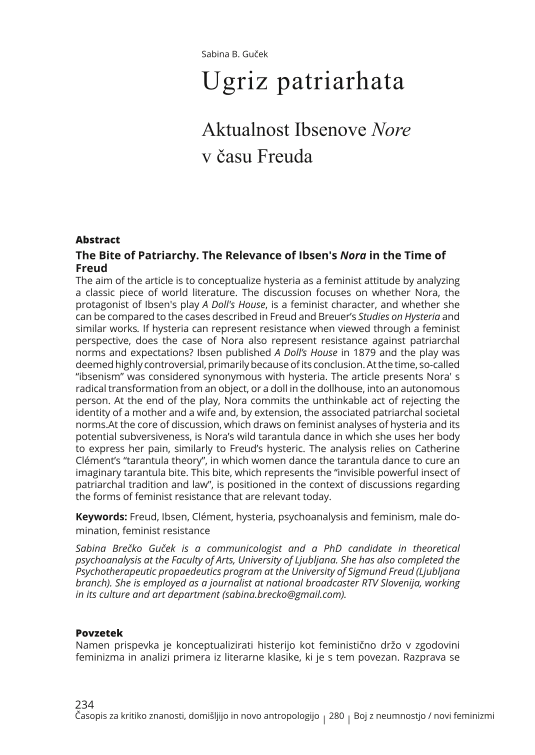The aim of the article is to conceptualize hysteria as a feminist attitude by analyzing a classic piece of world literature. The discussion focuses on whether Nora, the protagonist of Ibsen's play A Doll's House, is a feminist character, and whether she can be compared to the cases described in Freud and Breuer’s Studies on Hysteria and similar works. If hysteria can represent resistance when viewed through a feminist perspective, does the case of Nora also represent resistance against patriarchal norms and expectations? Ibsen published A Doll’s House in 1879 and the play was deemed highly controversial, primarily because of its conclusion. At the time, socalled “ibsenism” was considered synonymous with hysteria. The article presents Nora' s radical transformation from an object, or a doll in the dollhouse, into an autonomous person. At the end of the play, Nora commits the unthinkable act of rejecting the identity of a mother and a wife and, by extension, the associated patriarchal societal norms.At the core of discussion, which draws on feminist analyses of hysteria and its potential subversiveness, is Nora’s wild tarantula dance in which she uses her body to express her pain, similarly to Freud’s hysteric. The analysis relies on Catherine Clément’s “tarantula theory”, in which women dance the tarantula dance to cure an imaginary tarantula bite. This bite, which represents the “invisible powerful insect of patriarchal tradition and law”, is positioned in the context of discussions regarding the forms of feminist resistance that are relevant today.




